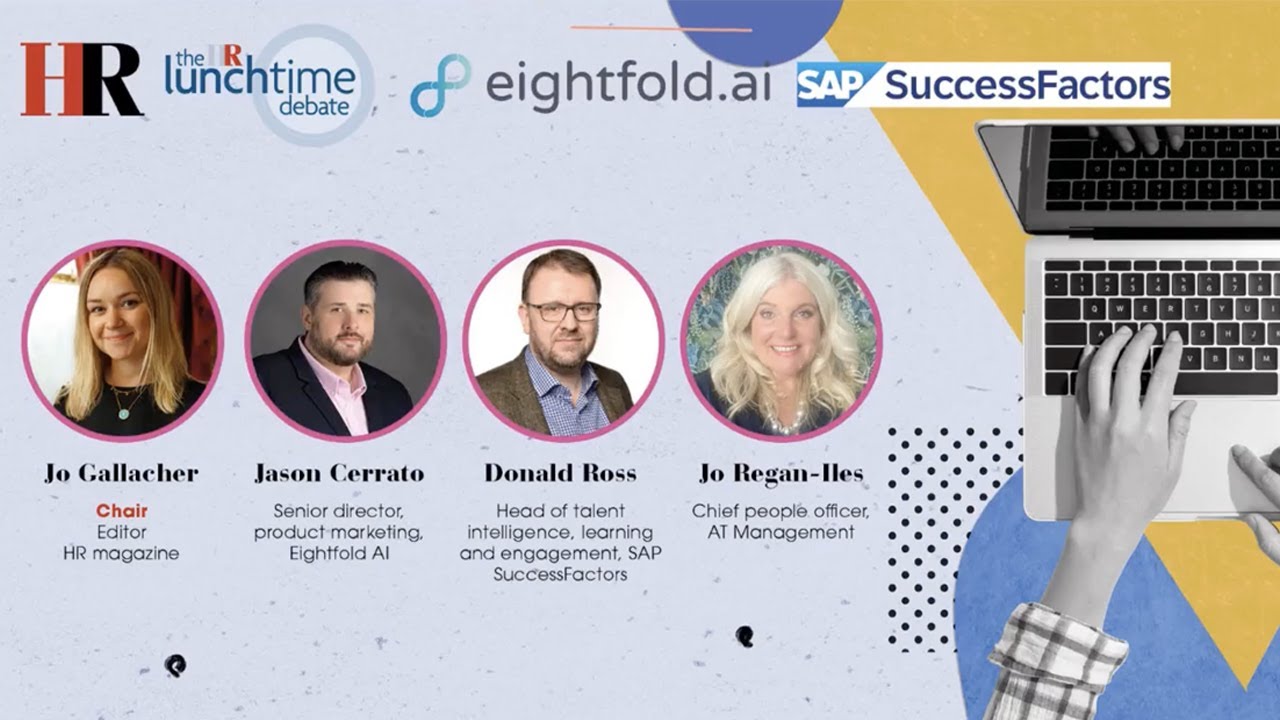Talent and people functions have had a transformative but challenging few years. As the job market continues to be tumultuous and new technologies redefine skills, the atmosphere of constant change isn’t likely to end any time soon.
This year, I’ve had the honor of meeting with HR executives around the country for dynamic, honest discussions about issues that are both exciting to them and keeping them up at night. The idea was to gather people with their peers to share ideas, challenges, and big questions to help the industry move toward effective, modern solutions.
Every one of these roundtables has been compelling and productive, but what struck me the most was the variety of directions that each group of leaders took the conversation, driven in many ways by their respective region’s biggest industries and labor market challenges.
Each invitation sent to HR executives prompted the same critical topics for reflection — workforce strategy, the impacts of AI on talent acquisition, the role of talent intelligence, future-proofing your workforce, and diversity, equity and inclusion — but each roundtable used these topics as a lens through which to dig into its own focus that really highlighted the complex state of HR in America.
Here are recaps from those five cities — Nashville, Philadelphia, Milwaukee, Seattle, and Boston — and the top HR topics from those conversations.

Related content: HR is expected to lead the charge regarding the skills-focused future, but what does this look like in reality? Watch our recent webinar on skills-based transformation to see how this could unfold for you.
Nashville: Leadership development
The HR leaders in Nashville came from the city’s two biggest industries, hospitality and health care. Both industries were hit hard by COVID, and both industries have a high volume of talent with a lot of mobility and churn.
A discussion about skills-based strategies, total talent, and the use of AI soon turned to leadership development and engagement, which are critical for retention. The shared concern was how these strategies can help talent teams analyze and develop leaders.
The challenges these organizations are going through can’t be entirely addressed with technology, but tools can be an important part of the solution. It takes a certain type of culture to build the environment where tech-supported strategies can flourish, and a big part of this is having a leader with a transformative mindset. You have to have a culture that is pushing the transformation versus how it has been done historically, with small pilots or in pockets of an organization.
With this kind of culture, talent teams are able to put together more robust strategies around marketplace mobility and total talent because everyone is pulling in the same direction. This is so important because these industries are so competitive — there are huge hospitality and health care talent markets, so people have a lot of options, and distinctive, genuine cultures are big differentiators.
Philadelphia: Diversity, equity, and inclusion
In Philadelphia, we had an audience of talent executives from a variety of consumer packaged goods companies, as well as financial services and insurance. As a large metropolitan city on the East Coast, Philadelphia has an extremely diverse employee population, and these leaders focused on the question of how talent intelligence and the ability to use AI can enable different approaches to support DEI with better outcomes.
Their questions included things like what does it mean to use AI matching to expand a candidate pool? How can we use skills-based role readiness for succession planning, and how does that expand the bench and the audience for consideration? How can these strategies help us move beyond diversity to equity and inclusion?
This group of leaders was also concerned about ethical AI and how talent management tools can control for bias or disparate impact. What are Equal Opportunity Algorithms and what outcomes do they generate?
Our Talent Intelligence Platform is designed for inclusion by expanding the audience for consideration rather than limiting it. It doesn’t hone in on that one magical unicorn with every skill you want, which is virtually impossible to find. Instead, it gives you 1,000 potentially qualified people you weren’t considering before because you were using different criteria. Like most talent leaders, our Philadelphia group discussed building their company’s future with total team or total talent strategy, but largely through the lens of how it can help their DEI efforts in an ethical way.

Milwaukee: Employee learning and experience
In Milwaukee, we spoke with several leaders from a variety of manufacturing environments with a range of goods from packaged food to fire trucks. Some were from the same CPG companies that joined us in Philly, however, the people from those companies in Milwaukee were solving for talent needs in manufacturing facilities rather than corporate offices.
Their top concern was how AI and skills-based talent management can help with employee experience. How can it help with career pathing and career planning for blue or gray collar workers who work in non-office settings? Leaders wanted to know how to use this technology to strategically deliver more effective learning programs across multiple platforms for people working in facilities and hybrid or remote.
Additionally, the Milwaukee audience was interested in not just using new technologies and an understanding of skills to personalize learning and make content easier to digest at the right time, but directly linking the value of training and growth to the bottom line to illustrate ROI and garner increasing executive support and investment.
Differing slightly from the discussions on the East and West Coasts that sometimes veered into future-focused concepts, the conversation in Milwaukee was practical and grounded, focused on how to implement employee experience strategies to actively help people do their jobs today.
Seattle: Return-to-office strategies
In Seattle, we met representatives from large retailers, banks, hospitals, and the Navy, which has one of its largest bases in Puget Sound. These West Coast organizations were a little bit further along in adopting HR tech, so one of the things that came up were the challenges they have in using that technology to transform into a skills-based organization.
When we think about becoming a skills-based organization, what does that mean? It means designing processes around talent, whereas most historical HR processes have been designed in the service of jobs.
While job descriptions list skills, people have skills. So if you design your processes around people, and you use AI to learn and react to that information dynamically, you have a more accurate leading measure of the way work is getting done and what your organization is capable of. If you build your systems around jobs, you’re basing your work off of how this was done yesterday, not how it needs to be done tomorrow.
The other big topic was over the past few years, many of these companies have made advantageous strategic talent hires by opening roles without geographic requirements. As leadership tries to drive people back to the office, talent leaders are worried about the risk of losing some of that talent, and building out new strategies to help with potential attrition and backfill.
How do you redesign work to figure out the true estimate of what you need versus what you had? Can you get some of that from existing talent who are willing to work in the office? Maybe it’s a conversation about reskilling or upskilling, or using tools to expand your talent pool to find people locally when you couldn’t find them before.

Boston: Total rewards and benefits
In Boston, with its focus on research, biotech, and finance, the conversation was around supporting career development, while at the same time enhancing total rewards and benefits. HR leaders want to help people navigate growing with their company, but they also want to identify some of the benefits, policies, or programs they may have to change to remove obstacles to doing that.
For example, we know that at all levels women were most impacted professionally during the pandemic because they still had more responsibility for child and eldercare while working. Therefore, it’s not enough for organizations to provide career development and career planning if there are other things that are blocking someone’s ability to succeed in the organization.
These considerations are particularly important for talent leaders whose companies are returning to the office. Many of the obvious benefits and perks of working on location include things like free food and amenities — one company even offered free dry cleaning. An HR leader noted that this new generation of workers doesn’t buy anything that requires dry cleaning. In changing times, perks that mean more time in the office aren’t relevant or helpful to people who need more flexibility in their everyday lives.
When leaders and talent teams think about how to develop employees’ careers, work-life support is as important as pathways, learning, and upskilling. You have to build policies, programs, and benefits around what you need going forward, not what you’ve always done.
Jason Cerrato is former VP, Market Strategy, at Eightfold AI. Before joining Eightfold, he was an HCM industry analyst with Gartner and held talent leadership positions at United Technologies for over a decade. Cerrato is the co-host of The New Talent Code, a podcast by Eightfold AI.
